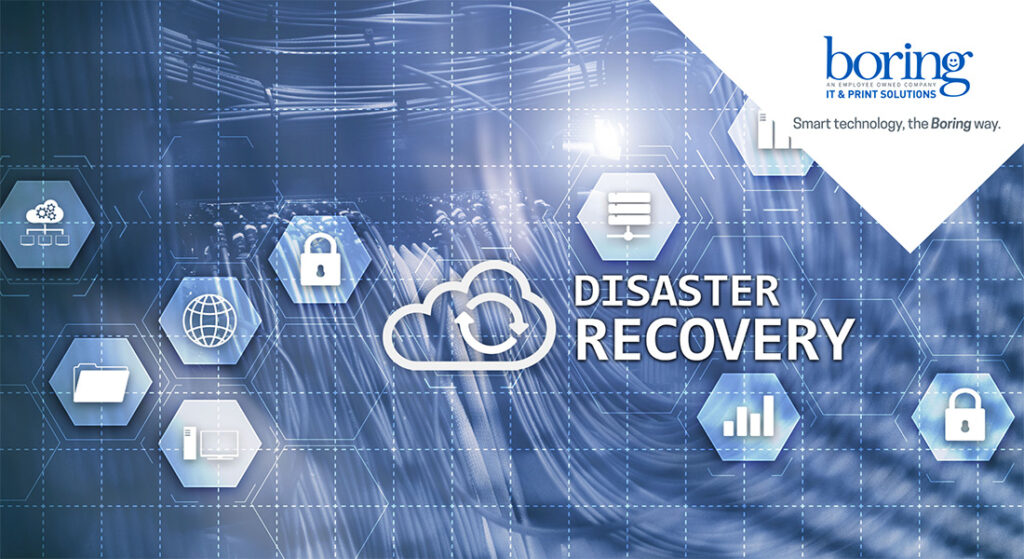Reimagining Business Collaboration

When all your employees are under the same roof, getting the group together to brainstorm ideas and solve big problems is an issue of packing all the people into the same conference room. But when your employees are spread across a city, country, or even the entire globe, how do you pull everyone together to collaborate? Technology has made the physical location of employees irrelevant to their productivity level—we can now access all corporate tools outside the office. But in the process of making it easier to recruit the best talent regardless of their proximity to the physical building that the company is housed in, we lost something that is inherent to the productivity of the entire workforce: the ability to work together as a single unit. ZAC, the newest member of the Zultys family of product, is a tool designed to help employees connect. By bringing all the functionality necessary to work together into a single application, you can put all your best brains into the same conference room—it just won’t be a physical room anymore. The possibilities are endless and the integration between the various methods of communication is infinite. A powerful team chat functionality hosts all the employees working on the same project in the same virtual conference room, and when conveying the ideas across with written correspondence becomes too difficult, getting all the employees together on a conference call doesn’t require trying to remember different phone numbers or emails to send the meeting invite to. All the contact info employees need is right there at their convenience, so that they can put their minds to use doing their job without wasting precious time on figuring out how to get in touch with their coworkers. Set up smaller collaboration hubs for more private conversation, accessible to only the people invited to this discussion, while more expansive projects can be discussed by huge groups. And on top of that, you still have access to all the call handling and call management functionality that have made Zultys Unified Communication Platform indispensable at corporations across the globe. ZAC specializes in enhancing productivity, by combining all methods of communication into a single application, one that is both intuitive and versatile and able to support the communication needs of any business. Technology is supposed to be making our lives easier, so make your business communication technology work for you! And ZAC is here to connect you and your employees together, to make tackling your hardest projects as easy as it would be if you were all sitting around that old conference room table. Contact us to learn more about how we can help you reimagine collaboration in your office! Source: Zultys Blog, Lina
Helpful Tips About Disaster Recovery

The Truth About Disasters They can happen to any business at any time and the downtime they cause is truly catastrophic, many of which never recover. The strength to avert disasters and effectively handle the ones that occur starts with knowledge. Downtime is Common 90% of companies experience some form of downtime, which may result in loss of data, security, productivity, and revenue. (Down) Time is Money An hour of downtime costs $8,000 for a small company, $74,000 for a medium company, and $700,000 for a large enterprise. Planning Ahead The most powerful and flexible disaster recovery plan is local virtualization for SMBs and enterprises with physical or virtual servers. Disastrous Situations Disasters that cause downtime may be a result of hardware failure, human error, software failure, or natural disaster. Recovery is Painful The average time it takes a business to recover from disaster is 18.5 hours, but 43% of companies never totally recover. What could happen? Disasters of all kinds cause downtime that is damaging to a business. Disaster planning must encompass disasters of all types and sizes: fires, floods, fraud, ransomware, cyber-attacks, power or IT system failure, human error, acts of terror, and other unthinkable scenarios. While the type of disaster varies, the impact is typical: data and operational downtime that is truly disastrous. The devastating effect of downtime caused by disaster include irreparable damage to data, reputation, customer relationships, income, and business vitality. The best offense is a good defense; you must protect your business by understanding your vulnerabilities, safeguarding against the risks, and preparing for the worst possible business disruption with a plan for business continuity and disaster recovery that will shield your data, protect your business, and keep your systems available and reliable no matter what happens. Solutions They can happen to any business at any time and the downtime they cause is truly catastrophic, many of which never recover. The strength to avert disasters and effectively handle the ones that occur starts with knowledge. Datto SIRIS Disaster Recovery as a Service (DRaaS) for local, virtual and cloud environments, within a single platform. SIRIS is the leading BCDR platform for businesses. Datto ALTO Datto ALTO is the only continuity solution designed specifically for small business. Using image-based backup and a hybrid cloud model, ALTO delivers enterprise-grade functionality at a small business price. Datto NAS Data backup, recovery and business continuity for local, virtual, and Cloud environments, within a single platform. Keep every file safe and accessible with Datto NAS. How can I protect my business? Your disaster recovery plan must ensure that your entire business infrastructure can be recovered within seconds. You need a holistic, integrated disaster recovery plan that is reliable, simple, and quick. DRaaS offers a disaster recovery plan that is visible, scalable, and affordable. Business-critical data, systems, desktops, servers, and the entire infrastructure must be protected and recoverable. With secure local virtualization solutions, if disaster strikes, your entire infrastructure (physical or virtual) is virtualized instantly, empowering you to continue your business operations without losing any data, incurring any damage, or experiencing any downtime. Get DRaaS With Datto Datto SIRIS Disaster Recovery as a Service (DRaaS) for local, virtual and cloud environments, within a single platform. SIRIS is the leading BCDR platform for businesses. Explore Datto SIRIS Datto ALTO Datto ALTO is the only continuity solution designed specifically for small business. Using image-based backup and a hybrid cloud model, ALTO delivers enterprise-grade functionality at a small business price. Explore Datto ALTO Datto NAS Disaster Recovery as a Service (DRaaS) for local, virtual and cloud environments, within a single platform. SIRIS is the leading BCDR platform for businesses. Explore Datto NAS Need help learning about preparing for a disaster? Give us a call and we’ll examine your existing systems and see what will work best for you. Lakeland office: (863) 686-3167 | Tampa office: (813) 289-8805 Source: Datto.com
Five Things Your Company Needs To Do Now To Prepare For A Hurricane

June 1 marks the official beginning of the Atlantic hurricane season. Most people do some prepping on a personal level but is your business ready? Here is a list of five things your company needs to do in June before the first storm heads our way. Establish a plan. If you have not already created a disaster plan, now is the time to get it done. This plan needs to include the various scenarios you might encounter should you be at ground zero. Some of the items you need on this plan include: Will you need to close and evacuate? How do you notify your staff and customers? Do you have an alternate location to operate your business should your building be without utilities or be inhabitable? How will you access company data such as customer or patient records? Check your backups. It is so easy to get complacent with backups. Whether you are backing up to media or backing up to the cloud, now is the time to evaluate it. Not only do you need to ensure you are getting proper backups, you also need to ensure you are backing up everything critical. More than once, we have helped a company recover a backup only to learn a critical directory or database was left out. If you are still backing up to media, you need to do a test restore to be sure the backup is valid. Develop a communications plan. If there are power outages, landline phones, and cell phones may not work. If your business is mission-critical, you need to ensure you have an alternative means of communication such as satellite phones. Texting is also a great means of communication after storms. When bandwidth is scarce, you might not be able to make a phone call, but you will likely be able to send texts. Create an emergency response team (ERT). It is good to define a skeleton crew that can carry out your disaster plan. You must develop clear roles and responsibilities for each team member. You must also ensure the team has contact information and instructions on how to proceed should they be unable to reach someone on the ERT. Once the storm passes, you should have the ERT contact your entire staff to ensure they are safe and do not have any immediate needs. Be sure to not only train this team but consider doing some role-play exercises to be sure everyone is on the same page. Secure your building(s). Before leaving for the storm, it is smart to walk through your building and unplug any mechanical or computer equipment to protect it from surges. You may also want to consider covering key equipment with plastic tarps or bags in case of moisture intrusion. Also, if you have confidential paper files or portable media, be sure these are stored in a locked cabinet or safe. Should your building become insecure, you want to know your data is safe. Depending on your location, you may also want to install hurricane shutters. If you have a generator, be sure you test that early in the season and insure you have fuel ready. This is by no means an exhaustive list but should give most small businesses a good start. If you would like help developing a comprehensive list, we’d love to help. Contact us for a free consultation.
What is Business Continuity & Disaster Recovery?

What Is Business Continuity? Business continuity is the process, policies, and procedures related to preparing for recovery or continuation of business infrastructure critical to an organization after a natural or human-induced disaster. Whether the business is small or a global enterprise you need to know how you can keep going under any circumstances. Business Continuity Vs Disaster Recovery Disaster recovery is a subset of business continuity. While business continuity involves planning for keeping all aspects of a business functioning in the midst of disruptive events, disaster recovery focuses on the IT or technology systems that support business functions. A Complete Disaster Recovery Solution A proper business continuity solution should proactively protect clients’ systems and data against disasters of all type. An MSP should offer a business continuity solution that can rescue businesses and get them back online within minutes of any of these disasters: Hardware and software failures Natural disasters Unintentional human error or malicious actions Ransomware and other cybersecurity threats What to Look for in a Business Continuity a Solution? Here are some more key things to consider when looking for a solution: Hybrid cloud backup: A hybrid approach fixes the vulnerabilities that a cloud-only or local-only possess. Superior RTO and RPO: Think in terms of business continuity rather than simply backup, and calculate how much downtime your business can endure and still survive (RTO) as well as how much data you can afford to lose (RPO). Image-based backup: Make sure that the backup solution takes images of all data and systems rather than simply copying the files. Interested in learning more about our Business Continuity & Disaster Recovery Solutions? Give us a call or shoot us a message here: https://boring.com/contact-us/ Source: Datto Blog

